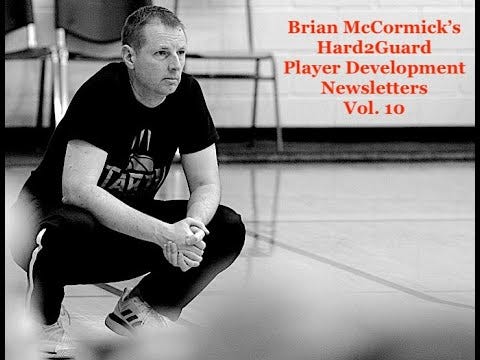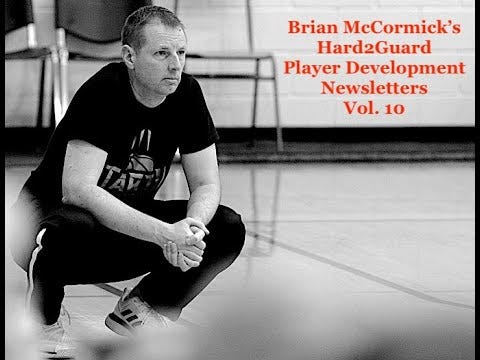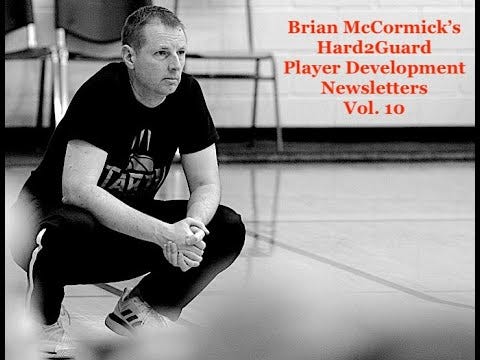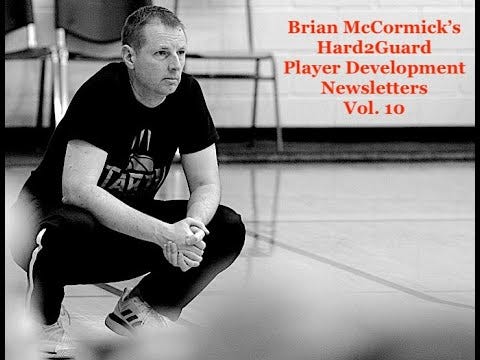Seeking Simple Answers in Complex Domains
Is replicating Finland's academy sufficient to replicate its national team success?
Finland’s run to the 2025 EuroBasket Semifinals was a compelling story that crafted immediate narratives. Finland is a small country (5.6 million) with a relatively sparse basketball history. Finland upset Serbia in the Round of 16 and beat Georgia in the Quarterfinals to reach the Semifinals. FIBA’s web site labeled Finland the “Trendsetters in Europe”, whereas others chronicled the Finnish Revolution. Vive la Fins!
The trendsetters illustrate the power of narratives. Nobody questioned the Finnish revolution, which was based largely on a victory over a similarly-sized country (Serbia) missing its second-best player (Bogdan Bogdanović). Finland beat Great Britain, Montenegro, and Sweden in pool play, and lost to Lithuania and Germany. Would anyone have noticed the revolution if Bogdanović played and Serbia prevailed in the round of 16? The revolution is televised because of a singular six-point win.
Polish coaches cited Finland as inspiration. Polish writers criticized Poland’s SMS PZKosz Władysławowo (SMS), while attributing Finland’s success to the Helsinki Basketball Academy (HBA), although reportedly only six of twelve players played for HBA, and Lauri Markkanen already was considered the best Finnish prospect before he joined at 17 years old. HBA and SMS are federation-run academies similar to INSEP in France, among others. HBA is one of the more successful national academies, although not without its internal critics, especially on the women’s side. The true effects of the academies are unknown. Would those players have developed into professional and international players without HBA?
Humans gravitate to stories. We create simple causal narratives. Finland reached the EuroBasket Semifinals, a monumental achievement in their basketball history, and HBA is well-known, therefore the accomplishment is attributed to the academy. Of course, the accolades ignore Finland’s other summer performances. Finland finished 15th (of 16) at the 2025 U20 EuroBasket and were relegated to the B division. The U18 team finished 18th (of 22) in the B Division, narrowly missing relegation to the C Division. The U16 team finished 15th (of 16) and were relegated to the B Division. Finland’s win over Serbia obscured an otherwise disastrous summer. The win over Serbia potentially suppressed some serious soul-searching over the lack of success.
I like Finland. I have tried to get a coaching job there since I assisted Gordie Herbert’s son’s college recruitment in 2013. I visited Finland in 2018 to conduct camps and clinics at the invitation of my friend Harri Mannonen, the mentor to Memphis Grizzlies Head Coach Tuomas Iisalo. I visited HBA and met Utah Utes’ legend Hanno Möttölä and Antti Koskelainen, who said he used one of my books in their coach education courses. When I coached in the European Youth Basketball League (EYBL), my favorite opponent to watch was Jyväskylä Basketball Academy (JBA Gradia), a Finnish team coached by Toni Nyman (blue below). Therefore, my purpose is not to criticize Finland, but to demonstrate the danger of simple narratives.
We crave simple explanations. Finland overachieved for a country of 5.6 million people, and we believe they must have the secret sauce. If only Poland can pour this secret sauce onto its SMS program, Poland may better utilize its 36.5 million population, height, economic growth, and substantial sports investment. Poland should not have to rely on naturalizing an American point guard who has never lived or played in Poland in order to compete internationally. However, as football coach and researcher Mark O’Sullivan warns, the “copy and paste” approach does not work because of varying sociocultural constraints.
Interestingly, as everyone discussed the Finnish Revolution, Germany, a well-known soccer nation, won the 2025 EuroBasket. Once a team of Dirk Nowitzki and few noteworthy players, Germany now has a depth of talent, as NBA players Mo Wagner and Isaiah Hartenstein were not even on the EuroBasket roster. Germany obviously has a much larger population (83.5 million) than Poland, and more recent success internationally and in terms of NBA talent than either Poland or Finland, but it should be at least as interesting to examine the champions as the trendsetters.
The professional coach in my club last season was German, and most of my knowledge of German basketball stems from him (and memory of year-old conversations). In the last two decades (possibly 2011), the German Basketball Federation set expectations (requirements) for professional teams. Germany has the Basketball Bundesliga (BBL) at the top of the pyramid, followed by national Pro A and Pro B, both of which are considered professional leagues, and the regional competitions, which would be more amateur adult players. Below the Pro B are the NBBL, which is the U19 league, and the JBBL, which is the U16 league. These are regional competitions that end in the playoffs deciding the German champion for the age groups.
BBL clubs must sponsor teams in the NBBL and JBBL; not all NBBL and JBBL clubs are affiliated with a BBL team, but all BBL teams sponsor NBBL and JBBL teams. Along with the NBBL and JBBL teams, there is a mandate that clubs have three full-time (paid) coaches involved with the youth program in their clubs. Rather than investing in a single national academy for the top dozen or so players, the Federation demanded the clubs invest in the local youth players. Consequently, the youth leagues improved in depth, quality, and competitiveness. ALBA Berlin, and possibly others, created partnerships with local schools to expand youth basketball opportunities throughout the community, and they consistently have one of the top NBBL and JBBL teams. Germany’s goal was to increase youth basketball participation, actively involve the professional clubs, and pay (some) qualified youth coaches. Germany finished 2nd at the 2025 FIBA U19 World Championships.
Finland’s win over Serbia convinced Polish basketball people to push for changes to SMS. I believe Poland underachieves internationally (although Poland won the B Division in U16, thus replacing Finland in the A division next summer). I have coached in Poland with SMS and Estonia with Audentes, and I believe these do more harm than good.
In Estonia, for example, we played our first-round playoff opponent in the next to last game of the season and won by 50. The playoff games were relatively close, as their two best players returned from Audentes. The entire regular season was lopsided. We finished second, but only played four competitive games, as there was a large drop off after the fourth-place team. The disparity disappeared in the playoffs when the top players returned to their home clubs. Is the (theoretically) better coaching and training the select players receive at the academy worth the decreased depth and competitiveness of the entire league? I favor Germany’s approach.
Poland has 16 teams in the PLK and another 17 in the 1st Division, which is considered a full professional level, but only five of the 16 PLK teams have a strong youth program (one might argue for seven, but it is less than half) in my experience, and 1st Division is similar, with arguably seven more. There are two other strong youth programs with no 1st Division or PLK teams. Strong is debatable, of course, as there were only six competitive teams at the U17 level last season. Regardless, there are twice as many professional teams as there are strong youth programs, which seems unsustainable. The solution should not be to handcuff these programs further by recruiting the top several players to the SMS to play 2nd Division men’s league, but to encourage (mandate) greater funding and cooperation between the professional teams and their youth programs. With 33 professional teams, there should be at least 30 strong youth clubs; instead, we beat the youth teams of a few professional clubs by 40, 80, and even 100 points.
SMS, despite essentially being an all-star team, lost five of its 11 games in the U17 CLJ. The excuse I heard all season was they were for development, not winning, but they played more to win than my team, and I did not see much development from many of their players, although my opinion is far from definitive. We had five competitive games all seasons; the league, and the country, would benefit more from the players playing with their home clubs all season, as opposed to the investment in the academy. What is that financial investment accomplishing?
Unfortunately, Finland and HBA provide a compelling narrative based on our bias for early identification and selection and specialized, expert coaches. Is this really how talent develops? HBA has been successful, but its success does not guarantee a similar system elsewhere will flourish. Similarly, Germany’s requirements for professional clubs to invest in youth programs has been successful, but the system may not work elsewhere, whether because of numbers, population, or finances. The USA has a school-based system, but that has not been shown to work anywhere else. We can look for ideas and inspirations, but an uncritical application of ideas from one country to another is a superficial approach and ignores the socio-cultural constraints (O’Sullivan et al., 2023).
There are other factors beyond the simple existence of HBA that contribute to Finland’s growth and success. In the FIBA article, Henrik Dettmann, the architect of modern Finnish basketball, said: “We invested so much of our efforts into coaches, their education and development. It paid off, even faster than I could’ve imagined it. We were also lucky that new young talented coaches showed up. That’s what it’s all about, finding people with qualities and attracting them into your sport.” HBA may have played a major role, but without these young talented coaches and a system to educate and develop them, would the academy have had such success? Will countries like Poland improve simply with greater investment into academies like SMS without addressing old-school coaching methods?
The NBA attempted to follow this academy path with the G-League Ignite and found almost no success. Their formula based on successes in other countries (HBA, INSEP in France) did not work. Ignite attempted to solve a problem that did not exist; the NBA has the NCAA developing 18-22 year-olds. Fortunately, the existence of the Ignite did not decrease participation and had a minimal effect on grassroots basketball because of the large population and number of participants. The copy and paste approach failed, even within the deepest, most successful basketball program.
Without the ability to guarantee a country can replicate Finland’s or Germany’s success by implementing similar systems, the advantage should lean toward the German approach because it attempts to improve by involving more players, whereas Finland’s approach can be seen as eliminating players at younger and younger ages. As O’Sullivan has said, “As many as possible, as long as possible, in the best environment possible.”
Finland reaching the EuroBasket Semifinals was a monumental achievement for a small country and should be celebrated. However, the celebration need not create a simple narrative for others to emulate. Until they repeat the performance, their success may be a one off, a good draw, a little luck. Should another country re-design its entire development program to mimic Finland’s simply because of one victory? Is copying the singular academy sufficient to replicate success? How does one account for all the other factors involved in a national team program’s success? Are we that desperate for simple answers in complex domains? Can we not search for context and embrace ambiguity?
O’Sullivan, M., Vaughan, J., Woods, C. T., & Davids, K. (2025). There is no copy and paste, but there is resonation and inhabitation: Integrating a contemporary player development framework in football from a complexity sciences perspective. Journal of Sports Sciences, 43(1), 99-108.








I like Finland and Germany, I have visited both and competed in both. I would hesitate to draw anything as a 'system' from any country. My experience is that this is usually cherry-picking examples and cases retrospectively and then labelling it as systematic.
My experience on the ground is that things are more fluid- chaotic even- especially where individual athletes and families are concerned.
Human beings crave simple solutions to complex problems. 10,000 steps, drink 8 glasses of water. Unfortunately those rarel if ever exist. In reality, small, incremental improvements are longer lasting and more sustainable but those don't sell as well on YouTube or TikTok.